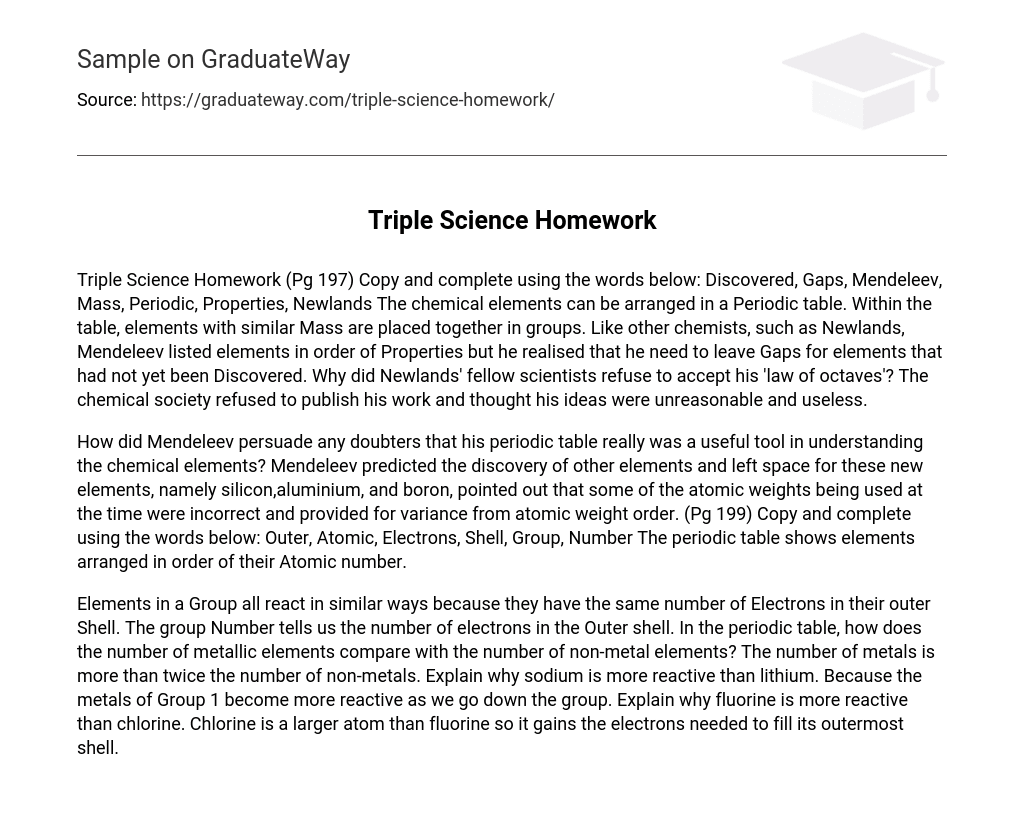Triple Science Homework (Pg 197) Copy and complete using the words below: Discovered, Gaps, Mendeleev, Mass, Periodic, Properties, Newlands The chemical elements can be arranged in a Periodic table. Within the table, elements with similar Mass are placed together in groups. Like other chemists, such as Newlands, Mendeleev listed elements in order of Properties but he realised that he need to leave Gaps for elements that had not yet been Discovered. Why did Newlands’ fellow scientists refuse to accept his ‘law of octaves’? The chemical society refused to publish his work and thought his ideas were unreasonable and useless.
How did Mendeleev persuade any doubters that his periodic table really was a useful tool in understanding the chemical elements? Mendeleev predicted the discovery of other elements and left space for these new elements, namely silicon,aluminium, and boron, pointed out that some of the atomic weights being used at the time were incorrect and provided for variance from atomic weight order. (Pg 199) Copy and complete using the words below: Outer, Atomic, Electrons, Shell, Group, Number The periodic table shows elements arranged in order of their Atomic number.
Elements in a Group all react in similar ways because they have the same number of Electrons in their outer Shell. The group Number tells us the number of electrons in the Outer shell. In the periodic table, how does the number of metallic elements compare with the number of non-metal elements? The number of metals is more than twice the number of non-metals. Explain why sodium is more reactive than lithium. Because the metals of Group 1 become more reactive as we go down the group. Explain why fluorine is more reactive than chlorine. Chlorine is a larger atom than fluorine so it gains the electrons needed to fill its outermost shell.





